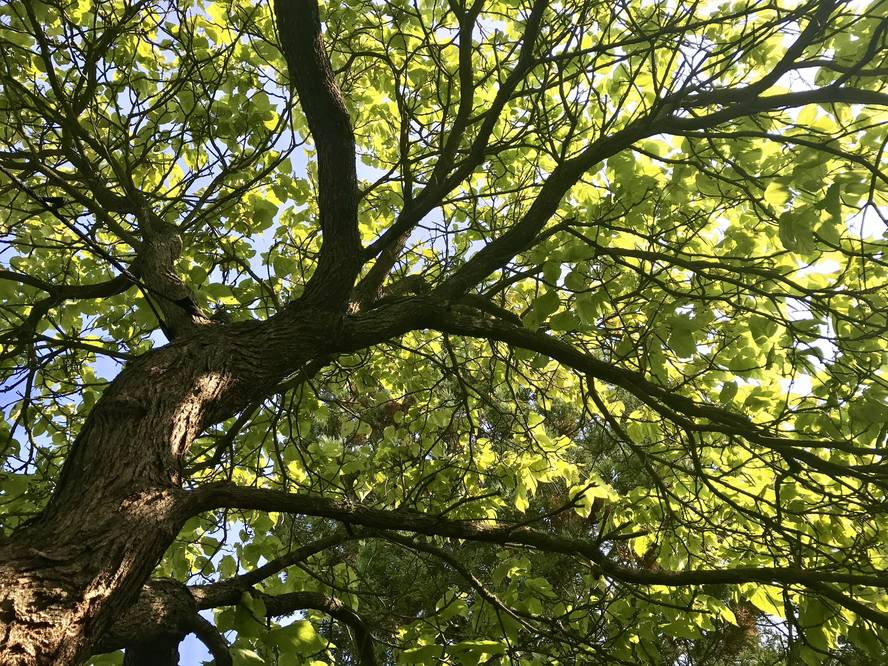Trees and climate in the forest and in the city
Climate change, as in other living things, directly affects trees. On the contrary, trees play a fundamental role in responding to the climate emergency. In fact, as we know, they absorb carbon dioxide, thereby reducing the atmospheric concentration of this greenhouse gas. In addition, its functions are very diverse, both in the forest and in the city.
Two experts have explained the influence of climate on trees and climate in each of these areas. Julen Astigarraga Urzelai is the first. He has just been appointed Doctor by the University of Alcalá with a thesis on how climate and forest use affect forest dynamics. The other is Marta Olazabal Salgado, researcher at the Basque Climate Change Center (BC3). Its main lines of research are adaptation to climate change and urban resilience. Both have shown that trees are fundamental to responding to the climate crisis.
Impact of climate change on trees and forests
Julen Astigarraga Urzelai
Professor and researcher of Life Sciences at the University of Alcalá
The forest, defined very simply, is an ecosystem of trees. Trees absorb carbon dioxide (CO2) from the atmosphere and get water and other nutrients from their roots. With all these components and using sunlight, they perform photosynthesis. During photosynthesis they transform inorganic matter (CO2 and water) into the organic matter needed for cultivation. In this process they release oxygen, initiate the flow of energy and create the basis for other living beings to live. Over time, living matter accumulates in wood, occupies more and more physical space and creates the habitat of other living beings. In short, this is how the complex ecosystem that we call forest emerges.
Within this complexity, it is necessary to highlight the multifunctionality of forests, that is, the capacity of this ecosystem to perform various functions. These functions, besides being essential for the functioning of ecosystems, have contributed to human beings throughout history: wood and food production, soil and biodiversity protection, water and climate regulation, improved leisure and human health, among others.
However, all these contributions cannot be maximized at the same level and reconciling them is one of the great challenges ahead. Forest management clearly plays an important role in this. For example, in Euskal Herria especially XX. Since the twentieth century, wood production has been maximised to the detriment, in general, of soil protection or water regulation.
In recent decades, both water scarcity and CO2 levels have increased considerably by human action and have given us the greatest challenge we have ever had, known as climate change. In short, increasing average temperatures and extreme climatic events reduces the photosynthetic capacity of trees, whose consequences are already visible in forests around the world. Scientific evidence leaves no doubt: tree mortality rates increase. At the same time, changes are occurring in the composition of tree species, moving towards the poles and at higher altitudes, and increasing the most adapted to high temperatures and droughts.
However, someone, with a great deal of sense, may argue that the increase in CO2 can increase tree growth rates and thereby reduce the effects of water scarcity. This seems to be the 20th. Trend until the end of the 20th century, but there is increasing evidence that the negative impacts of water scarcity are surpassing the positive effects of the increase in CO2. If all this were not enough, changes in land use have also hit forests; we have only to look at the landscape of our environment to detect the homogeneity of landscapes.
The coming years will be decisive in minimising the impact of climate and changes in land use on forests. From a positive point of view, our knowledge of the functioning of our forests is increasing. However, despite the plantations carried out, we must recognise that we are not able to create a forest with all its complicity and that we too are part of nature. Consequently, the best option left to us is to help forests in the transition to a new climate based on what we know about the functioning of forests, rather than looking for entirely technological exit routes. Let us help the forests on this road before it is late.
Importance of trees in cities
Marta Olazabal Salgado
Researcher Ikerbasque and Head of the Research Group Adaptation in BC3
Nature plays a fundamental role in cities. To such an extent that, although decades have been hard to realize, today there is a tendency to reintroduce nature into urbanism as a backbone of physical and psychological health, biodiversity and climate resilience. Surely you will have the understanding of solutions based on nature or green and blue infrastructures. These concepts are used to disintegrate and recover ecosystems as one more element of the urban landscape. Among them, trees are the most important for the quantity and quality of their benefits.
Trees bring a number of benefits that improve quality of life through the creation of more visible and sustainable environments. We can have trees in the streets, rows or squares, as well as parks or urban forests. As these trees become part of a larger ecosystem, they will gain space and health, and their benefits will multiply. In fact, many cities are creating green urban corridors to connect ecosystems, foster biodiversity and facilitate access to nature from anywhere in the city. But it's very important that trees are in all the streets of the city, and you have to analyze them as acupuncture and from ecological respect.
Trees reduce noise and trap atmospheric pollutants. For example, the leaves capture particulate matter with a diameter of less than 10 microns. This material is particularly harmful to the lungs and heart, and most of it comes from the circulation of vehicles. In addition, through photosynthesis, trees produce oxygen and absorb carbon dioxide. Carbon dioxide is one of the greenhouse gases and over the past 80 years, due to the disproportionate consumption of fossil fuels, the temperature of the atmosphere is rising. Trees and their permeable environments (unsealed lands) capture water and are strong allies to prevent erosion (especially in complex orographic areas) and flooding in extreme rainfall. They also release moisture by evapotranspiration, which favors the combustion of local temperature. This moisture and shade of the leafy cups make the heat waves magnificent shelters. Not only that, but this regulation of local temperatures in public space allows to reduce the energy demand in buildings for heating systems in winter and summer. It can be said that trees generate a microclimate that is essential in a climate emergency context, in which cities are especially vulnerable due to built heritage and population concentration.
As living beings with their own rights, trees are also centres of biodiversity and ecological health. Many species, such as birds, fungi, insects, etc., also depend on trees in cities, which live in a difficult balance with human activities. The protection of biodiversity is important not only because we live in a time of global crisis, but also because it is an indicator of the health of urban ecosystems. At higher levels of biodiversity, ecosystems (trees) better perform their functions.
Last but not least, the relationship with nature is fundamental to people. Trees and the biodiversity of our environment help us cope with life in an artificial urban environment. It is proven that being close to nature helps reduce stress and anxiety and improves mental health and well-being, which can be avoided by urban swirl.
Undoubtedly, trees in cities are irreplaceable in the face of the climate crisis and the loss of biodiversity. The integration of trees into cities and the management of their health cannot become a mere public works service. It requires strategy, time and investment. There is strong competition with other urban infrastructures, but the benefits of trees are already inevitable.








